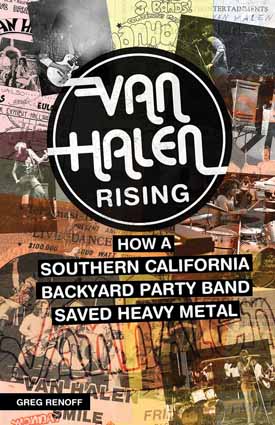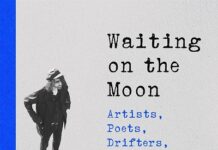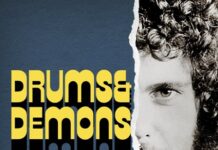I’ve been a fan of Van Halen since 1976, just before they signed with Warner Brothers. Yeah, I was one of the lucky ones who got to see them up close and cheap at local venues like the Whisky and Starwood. Since then, whenever I’ve written about Van Halen, I’ve mentioned my own little history with the band (No, I never got a chance to know them on any kind of personal level). One day, I received a message from Greg Renoff, who told he’d read a piece I’d done on the first Van Halen album. He added that he was writing a book about the band, focusing on their origins. I told him to send me a copy when it was done and I’d be happy to review it. What I didn’t tell him was that I’d wished I’d done the same thing — written a book about the early days of Van Halen. After all, I’d seen them back then, so I was more than qualified. Or so I thought.
True to his word, Greg had his publicist send me a copy of the book he’d written with the snappy title, Van Halen Rising. As I read through the book, those days and a slew of new revelations flooded my memory bank with the rise of the Pasadena band and the subsequent wave of LA-based hard rock and heavy metal bands. Right off, I realized a few things. First off, the book went into great detail about a bunch of legendary backyard Van Halen gigs I’d only heard about. Secondly, there is no way I could have a written a book as thorough and well-researched as Van Halen Rising. Renoff really went all out and covered every conceivable angle. Aside from the ever-elusive Van Halen brothers and the dodgy David Lee Roth, he was able to speak with virtually every other principal player involved with the early rise of the band, including bassist Michael Anthony and producer Ted Templeman, who got Van Halen their deal with Warner Brothers and went on to produce their first five albums.
The book goes back to the very beginning, when Jan van Halen was working as a musician in Holland and raising a family with his wife Eugenia and their two sons, Alex and Edward. The family resettled in Southern California in 1962, where Jan instilled a musical upbringing in Alex and Edward that would shape the rest of their lives beyond what anyone could have imagined. Meanwhile, Dr. Nathan Roth relocated his family from Massachusetts to Southern California in 1963. His precocious and outgoing son David had no serious aspirations for becoming a musician; he was aiming for “rock and roll star.”
Even though the Van Halens and Roth were not interviewed for the book, Renoff subtly peppers in quotes from other cited sources to tell the story. It’s obvious that in those days, the Van Halen brothers gained a reputation for their exemplary musicianship, and Roth was, at first, considered a no-talent hack. It was his exuberance, looks and self-assuredness that eventually landed him the gig as lead singer for Van Halen. But before that all happened, as the book tells it, Roth’s band Red Ball Jet was burning up Gazzarri’s on the Sunset Strip. Meanwhile, the Van Halens, along with bassist Mike Stone and keyboardist Jim Pewsey, had their band, Mammoth. As we learn, Roth worked his way into Mammoth, using his PA as a bargaining chip.
After playing a series of local gigs, winning fans one by one, it was Roth who suggested the band change its name to Van Halen. And as the book goes, we discover that it was the singer who took charge when it came to getting gigs, building a following and adding style and swagger to their image. His father also chipped in financially here and there, and gave them a place to practice and record. Without giving away much more, once the band is together and ready, it’s a matter of one pivotal gig after another. Each one seems to out do the other in attendance and outrageousness. Unlike the Beatles who started out in dark and dingy British and German nightclubs, Van Halen played backyard parties, staged at someone’s house or compound, usually without a permit, beer served to minors, and eventually raided and shut down by the local police. This, as I recall, happened all over Southern California in the 1970s, and the Pasadena neighborhoods where Van Halen played were no exception.
Along the way, Renoff talks to fans, promoters, friends, acquaintances, associates, managers, others musicians and former band members. Michael Anthony fits into the story rather late, and joins after Stone is unceremoniously let go, primarily because he couldn’t sing. And, as any fan of Van Halen will attest, Anthony’s backing vocals are, to this day, a big part of the band’s sound. Once Anthony is in, things really start to pop. In an age when punk and new-wave are moving in, Van Halen still rule the Sunset Strip and land key gigs, like opening for UFO at the Golden West Ballroom. They come in contact with the likes of Gene Simmons, Kim Fowley, and Marshall Berle (nephew of Milton), which leads to Ted Templeman and the deal with Warner Brothers. After they sign and record their self-titled debut, they go on tour with bands like Journey and Black Sabbath, and are hailed as a huge success right out of the gate. Just as their star begins to rise on the international scene, Van Halen Rising comes to a quiet close.
Certainly, the story continued with enough twists and turns to warrant multiple volumes. Oftentimes, reading about a band’s beginnings can drag into a nonstop road show, booby trapped with obstacles and strange characters. For a Southern California native like me, reading about Van Halen’s rise was closer to home and fairly normal. I mean, there were literally hundreds of bands angling for stardom back then. But when I saw Van Halen at the Whisky A Go Go, I just knew they were going to make it. Who could have guessed they would have such a resounding impact on the guitar and the hard rock scene that swallowed Hollywood in the 1980s.
It took me a while to digest this all after I read this book. The extent of Renoff’s research reveals some incredible insight, the kind that fans savor, discuss and share for years to come. It’s an admirable feat, one I’ve yet to attain as a writer. More than that, however, is the fact Renoff wasn’t there, but far and away from Southern California in Oklahoma, earning a PhD in American history. He’s a fan in the purest sense of the word, recognizing the genius of Van Halen once they were hatched upon the world; curious enough to wonder how it all began. He’s not an insider, which allows the book to breathe and resonate without getting caught up in the incendiary, subjective hubbub of being part of the story. You read Van Halen Rising, and you get a warmly written historical guide about one of America’s greatest rock bands. What more could one ask for? Thanks to Greg Renoff for sending me this book and getting it right.
~ Shawn Perry




















